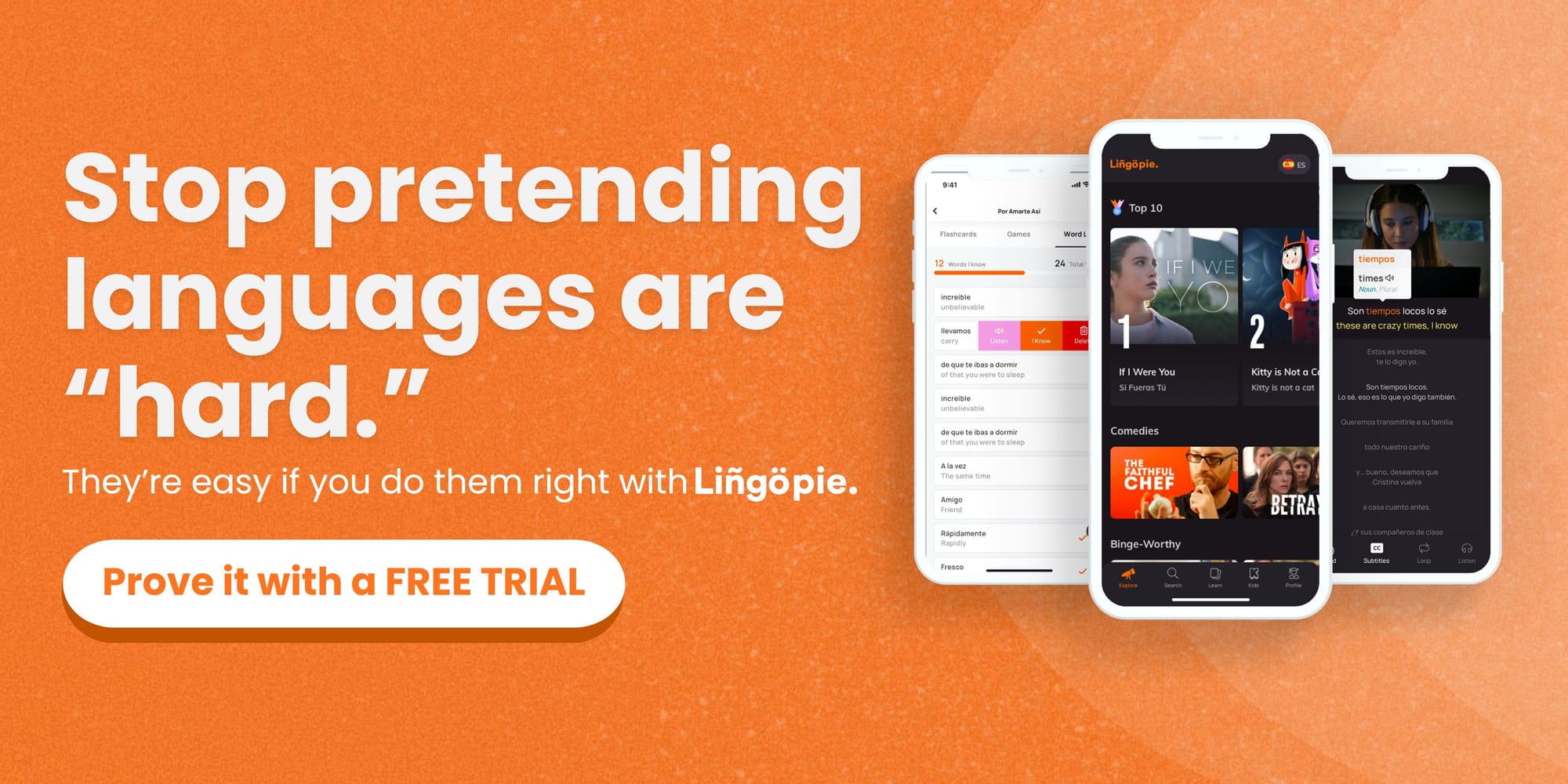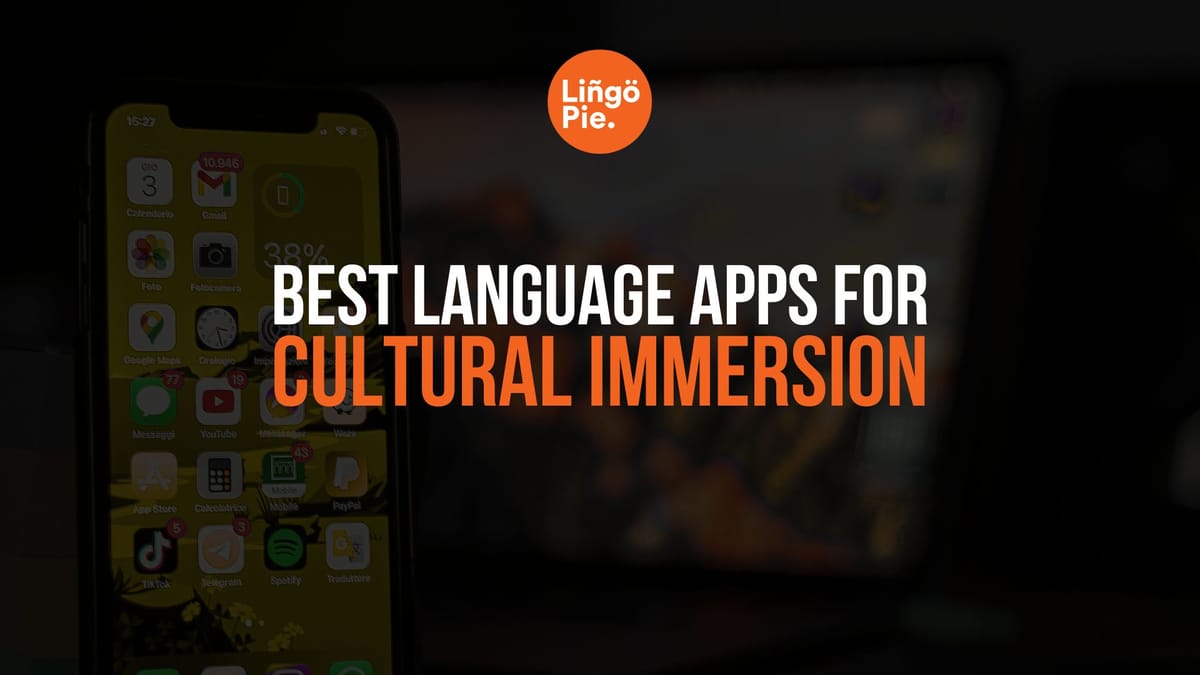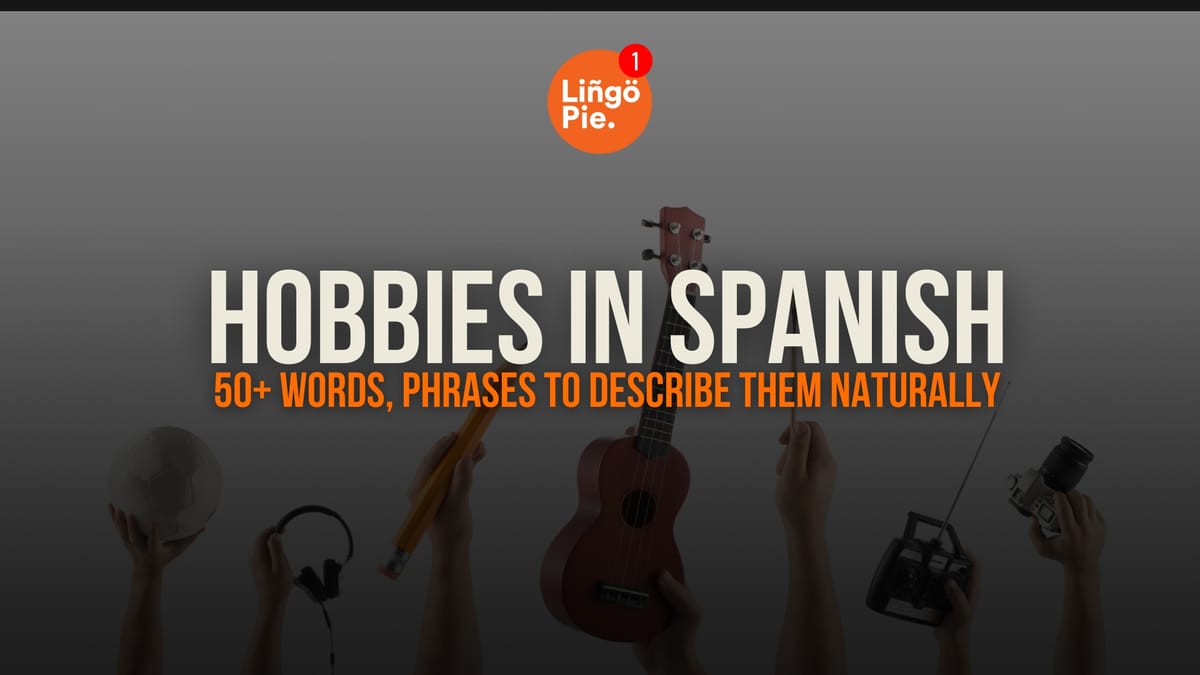Learning a language by memorizing words is like trying to understand a movie by reading the script. You get the plot, but you miss everything that makes it meaningful. The truth is that culture shapes how people actually USE language. Culture dictates which words are appropriate, what tone to pair with your boss versus your friend, and why some things can’t be translated directly.
In this post, I'll cover why culture and language are inseparable, what you can actually learn from cultural immersion, and the 5 best apps that teach you the "why" behind the words instead of just cramming vocabulary into your head. Let's begin!
- What Is An Agglutinative Language? (And Why They’re Actually Easier Than You Think)
- 10 Most Common Languages In The U.S. [2025]
- English or Spanish: 11 Surprising Differences

What Can You Learn From Culture?
Culture provides the context that shapes how language is used, including social norms, customs, gestures, tone, and meanings behind words and expressions. Without understanding culture, learners may struggle to use the language appropriately or fully grasp its nuances.
- Know when someone is being polite vs. genuinely interested
- Understand what level of enthusiasm or formality fits the situation
- Learn what subjects are welcome, awkward, or off-limits
- Recognize cultural differences in eye contact, personal space, and gestures
- Understand sarcasm and humor instead of taking everything literally
- Navigate office politics and professional situations
- Know how friendships develop instead of staying in small talk
- Understand whether people prefer direct confrontation or subtle hints
Best Language Apps For Cultural Immersion
Lingopie

Lingopie uses authentic TV shows, movies, stories, and music from target countries, giving you access to real cultural content that natives consume daily. The interactive dual subtitle system lets you click on culturally specific phrases to understand what they mean. The more you click, the more exposed you’ll be to cultural humor, social dynamics, and unspoken communication patterns.
Honestly, this is the closest you’ll get to actually living in a country without buying a plane ticket. Watching real entertainment means you’re learning culture the same way natives absorb it growing up. You naturally pick up on social cues, humor, and unspoken rules because you’re seeing them play out in stories rather than memorizing cultural facts from a textbook.
Memrise

Memrise records real native speakers in their natural environments through street interviews and candid footage. The "Learn with Locals" feature shows you actual cultural behaviors, body language, and communication styles in authentic settings. These videos capture genuine cultural interactions rather than scripted scenarios, giving you insight into how people really communicate within their cultural framework.
The street-level footage gives you something most apps miss completely: real people being themselves. You see how they actually move, gesture, and express emotions, not how actors think they should. This raw authenticity helps you recognize cultural patterns you’d only notice by spending months in the country observing people.
HelloTalk

HelloTalk connects you with native speakers for direct cultural exchange through its chat, voice, and video features. The live cultural events and group discussions expose you to different cultural perspectives and communication styles. The language exchange format also lets you ask cultural questions and get real explanations from people who live the culture daily.
This app gives you something invaluable: the ability to ask "why" when you don't understand cultural behavior. Real people can explain cultural nuances in ways that no algorithm or lesson plan can. You get honest answers about social expectations, generational differences, and regional variations directly from people who navigate these cultural waters every day.
Busuu

Busuu integrates cultural tips and social context explanations throughout its lessons, showing you the cultural reasoning behind language choices. The conversational practice scenarios are designed around real cultural situations you'll encounter. The platform’s multimedia approach combines cultural insights with language instruction, helping you understand when and why certain expressions are culturally appropriate.
What sets Busuu apart is how systematically it breaks down cultural context. Instead of leaving you to figure out social rules on your own, it explicitly teaches you the cultural logic behind communication patterns. This structured approach works well if you prefer understanding the "why" before jumping into cultural situations.
Mango Languages

Mango Languages embeds cultural notes directly into lessons, explaining social norms, etiquette, and behavioral expectations alongside vocabulary. In fact, it has contextual explanations that connect language learning to cultural competency, teaching you both linguistic and cultural appropriateness.
Just note that Mango takes cultural education seriously in a way that feels almost academic. The cultural notes are comprehensive and thoughtful, giving you the kind of deep cultural understanding that prevents embarrassing mistakes. It's particularly valuable if you're learning a language for professional or formal purposes where cultural missteps could have real consequences.
How Are Culture And Language Related?
Culture and language are inseparable because language carries the values, beliefs, and worldview of its speakers built right into the words and grammar. Every language stores centuries of cultural thinking patterns that determine how people communicate, what they consider important, and how they see the world around them.
So in short, when you learn a language, you absorb these cultural instructions automatically.
Language as Culture
Language stores cultural knowledge in its words and phrases. When a language creates specific words for concepts, it reveals what that culture values most. For instance, Spanish has "sobremesa" because sharing time after meals matters deeply to Hispanic cultures. The Japanese developed "ikigai" because finding life purpose through work is central to their worldview. These words exist because the cultures needed them to express important ideas that other languages might struggle to capture.
Example: German compound words like "Verschlimmbessern" (making something worse by trying to improve it) reflect German cultural values of precision and skepticism toward unnecessary change.
Language Influencing Thought and Perception
Language also shapes how you think and process information. The words and grammar structures available to you influence how your brain categorizes experiences. For example, Russian speakers can distinguish between light and dark blue faster than English speakers because their language treats these as completely different colors rather than shades of the same one. This shows how vocabulary literally changes perception and mental processing.
Example: Mandarin speakers often think about time vertically (next week is "down," last week is "up") rather than horizontally like English speakers, which affects how they organize schedules and plan future events.
Intercultural Connection
Beyond shaping thought, understanding cultural context helps you communicate effectively across cultures. What seems like small talk in one culture might be genuine care in another. For example, Arabs ask detailed questions about family because showing interest in personal life demonstrates respect and friendship. Recognizing these cultural patterns prevents misunderstandings and helps you respond appropriately to different communication styles.
Example: Korean speakers use different speech levels depending on age, status, and relationship closeness. Learning these levels means learning how to show respect and build relationships the way Koreans actually do it.
Immerse In The Culture With Lingopie

Cultural immersion through language learning changes everything. Instead of memorizing disconnected words, you understand how language actually works within its cultural context.
While all these apps offer valuable approaches to cultural learning, Lingopie stands out for its natural, engaging method of cultural absorption through authentic entertainment. You learn culture the same way natives do - through stories, emotions, and real-life situations that stick with you long after the credits roll.
If you want to experience true cultural immersion without leaving your couch, try Lingopie for free and start watching your way to fluency.
FAQ
Is Language Part Of Culture?
Yes, language is fundamentally part of culture. It's the primary way people communicate shared values, beliefs, and customs within a cultural group. Language carries cultural meanings and worldviews, making it inseparable from the culture that shapes how it's used and understood. When you learn a language, you also learn the customs and social norms of that culture.
How Does Language Influence Culture?
Language influences culture by shaping how people think and interpret the world. It acts as a filter for cultural reality, affecting behaviors and social practices. The structure and vocabulary of a language guide a community's worldview and help transmit cultural knowledge across generations. Language both reflects and molds the culture it belongs to.
How Does Culture Affect Language?
Culture affects language by embedding it with specific meanings, social norms, and communication styles unique to each cultural group. Cultural practices influence which words and expressions people use, along with rules for politeness and tone. As culture changes, language evolves too, impacting vocabulary and linguistic customs over time.









![Language Reactor Review: Why Lingopie Is The Better Choice for Language Learning [2026]](/blog/content/images/size/w300/2024/12/Language-Reactor-Review.jpg)